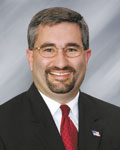September 27, 2012
Planning the Second Time Around
 By Curt Ford
By Curt Ford
Nash Nash Bean & Ford
After dating for two years in their late 60s, Jim and Nancy created a new family when they were married in a beautiful backyard ceremony, surrounded by friends and family, including their adult children from their first marriages.
Following the ceremony, Jim moved out of the apartment that he had called home after his divorce and moved into the house Nancy had shared with her first husband before his death. In the ensuing years, the children, Jim and Nancy grew into a new, blended family, celebrating holidays and birthdays or just gathering for cook-outs and Super Bowl parties.
However, following Nancy’s death 10 years into the marriage, the cordial gatherings abruptly ended when her children discovered she and Jim had shared title to their assets, and he now was in sole possession of “their” family home. When Jim died six months later without solving any of the estate issues, all the assets they had shared passed solely to his children, effectively disinheriting Nancy’s children from their family home, heirlooms and assets.
Jim and Nancy’s estate planning mistakes are not uncommon. Estate planning for second marriages can be challenging, but with better planning, their children did not have to digress into arguments and hard feelings. Jim and Nancy wanted to ensure that following one of their deaths, the surviving spouse would be provided for, but there are planning options that do not inadvertently disinherit one side of the family. For example, a well-planned trust can allow a surviving spouse to remain in the home during his or her lifetime or receive life-time income from IRAs, retirement plans or other assets until his or her death. Under this plan, following the death of the second spouse, assets can then be distributed to family members.
Every family’s situation is unique, but a second marriage creates additional planning situations. Make sure your estate plan reflects your values and goals for all members of your family. To best ensure your plans benefit both your spouse and your family, consult with an attorney experienced with estate planning issues for blended families.
Nash Nash Bean & Ford are members of the American Academy of Estate Planning Attorneys and the National Academy of Elder Law Attorneys. To receive a copy of our most recent newsletter “Your Estate Matters” or for a free consultation on Estate or Long Term Care Planning, call 309-944-2188, 309-762-9368 or 1-800-644-5345. You may also contact our firm by email at info@nashbeanford.com or visit our web site at http://www.nashbeanford.com.
The firm devotes its practice primarily in the areas of estate, business and tax planning and related areas of the law, as well as elder law and trust administration and probate. We offer guidance and advice to our clients in every area of estate planning.
This column is designed for general information purposes only, and is not intended, nor should be construed or relied upon, as legal advice. Please consult your attorney if specific legal information is desired.
Tags: 60s, Adult Children, Assets, Birthdays, Blended Family, Cook Outs, Family Members, Gatherings, Hard Feelings, Heirlooms, Iras, Life Time Income, Nancy, Nash, Retirement Plans, Second Marriage, Second Marriages, Second Time, Sole Possession, Super Bowl
Trackback URL: https://www.50pluslife.com/2012/09/27/planning-the-second-time-around/trackback/


